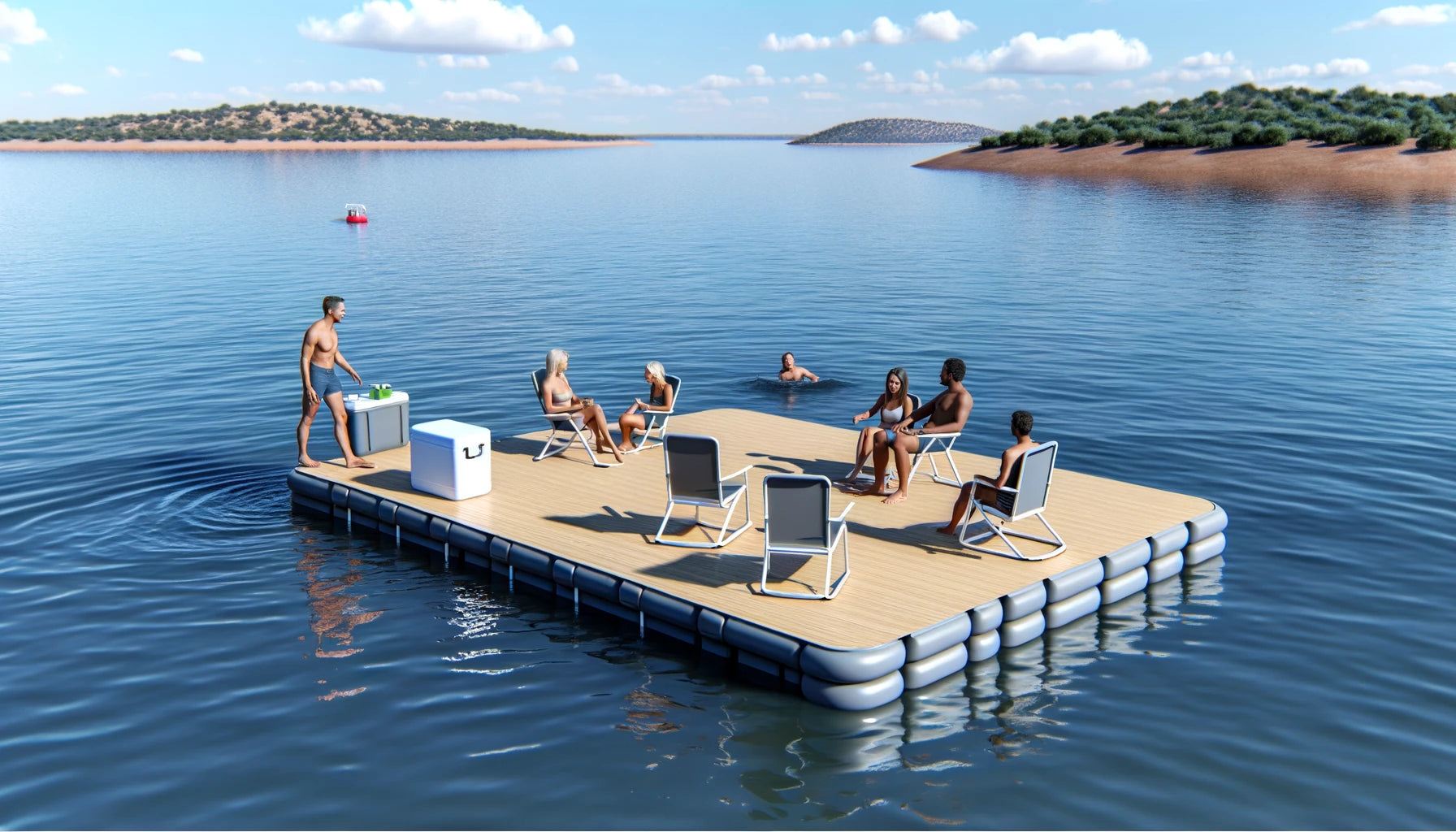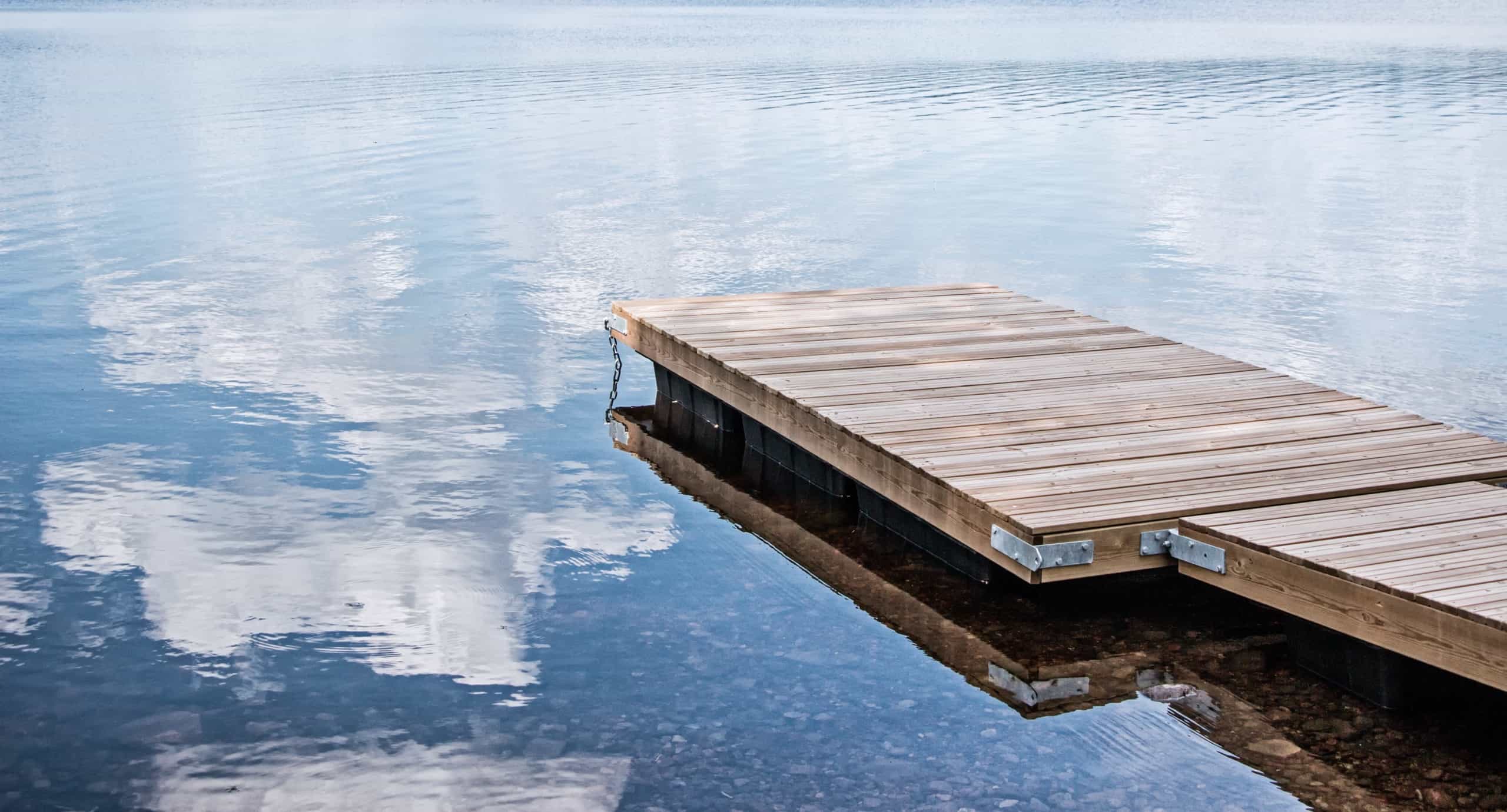Enhance Your Water Accessibility With Easy-To-Install Floating Docks
The installment of floating docks provides a practical option for enhancing water gain access to, permitting users to involve in various tasks with simplicity and comfort. As we explore the advantages and types of floating anchors, as well as the installation procedure and upkeep tips, it ends up being clear that such improvements could significantly transform your beachfront experience.
Advantages of Floating Docks
Floating anchors offer numerous advantages that make them an increasingly prominent option for marinas, beachfront residential or commercial properties, and leisure facilities. Unlike taken care of anchors, floating anchors surge and loss with the tide, guaranteeing constant accessibility regardless of changing water conditions.
Additionally, floating docks are much easier to maintain and mount. Their modular style enables straightforward assembly and disassembly, which is particularly helpful for seasonal usage. When not in usage., this flexibility also assists in transport and storage space.
The construction products utilized for floating anchors, such as polyethylene and light weight aluminum, are immune to corrosion, making them sturdy and lasting. This durability converts to reduce upkeep costs with time, guaranteeing a far better return on investment.
In addition, floating docks can boost the aesthetic charm of beachfront buildings, offering a smooth link between land and water. floating docks. With their flexible style, they can suit various activities, from boating to angling and swimming, thereby maximizing the energy of waterfront areas. On the whole, floating anchors represent a sensible and efficient option for enhancing water access
Kinds of Floating Docks
Different sorts of floating anchors deal with various needs and applications, each developed with specific features to enhance capability and performance. The most typical types consist of modular, hinged, and roll-in floating anchors.
Modular floating anchors are composed of interlacing areas that permit modification in dimension and configuration. Their flexibility makes them appropriate for commercial and property applications, suiting numerous water levels and problems.
Hinged floating anchors are created to climb and fall with changing water levels. This kind is particularly helpful in locations with varying tides or seasonal water level changes, guaranteeing stability and access throughout the year.
Roll-in floating docks attribute wheels or rollers that make it possible for very easy setup and elimination. These anchors are ideal for superficial waters, enabling individuals to effortlessly steer them in and out of the water, making them a prominent option for private lakefront residential properties.
Furthermore, there are specialized floating anchors for particular purposes, such as watercraft lifts, swimming platforms, and fishing anchors. Each type is crafted to meet distinctive demands, making sure that individuals discover the best option to improve their water accessibility and entertainment experiences.
Installation Process Introduction
Recognizing the different kinds of floating anchors is essential for successful installation, as each version has distinct needs and factors to consider. The setup procedure typically starts with site analysis, where one need to assess water deepness, possible challenges, and regional regulations. floating dock company. Proper planning makes certain that the dock will be practical and certified
Following, prepare the location by removing particles and noting the installment border. This step is essential for establishing the dimensions and positioning of the dock about existing frameworks. Depending on the dock type, anchoring systems may include either heavy supports or screw piles, guaranteeing stability and safety and security.

After setting up, the dock must be very carefully positioned in the water, guaranteeing it is degree and appropriately anchored. Finally, perform a detailed examination to make sure all connections are secure which the dock awaits use. With appropriate installation, floating docks can supply improved accessibility and satisfaction for many years to come.
Upkeep Tips for Long Life
To Recommended Site keep your floating dock in leading condition, it's necessary to remain on top of routine upkeep tasks. Begin by evaluating the dock's structure for any type of signs of wear or damages, especially after extreme climate events. Try to find cracks, loose installations, or any shifts in placement that could jeopardize security.
Routinely tidy your floating dock to prevent algae accumulation and particles accumulation. Furthermore, inspect see it here the floats for leakages or slits, as these can affect buoyancy.
Even more, check the support system routinely to ensure it stays safe. Gradually, supports can become loosened due to shifting water degrees or sediment, which might cause dock instability. Finally, think about using a safety sealer to wood areas to repel dampness and extend their life expectancy. By adhering to these upkeep pointers, you can improve the longevity of your floating dock, guaranteeing it stays a trusted water accessibility option for several years ahead.
Enhancing Your Waterfront Experience
The satisfaction of waterside living is considerably enhanced by attentively boosting your floating dock experience. A properly designed dock serves not just as a practical area for mooring watercrafts however also as a welcoming area for leisure and recreation. To maximize your floating dock, take into consideration integrating attributes that satisfy your way of life.

Lighting is another vital aspect for boosting your dock experience. Mount ambient LED lights to produce an inviting environment throughout evening hours. Additionally, safety ought to not be neglected; guarantee that your dock is furnished with strong barriers and non-slip surface areas.
Verdict
Finally, floating anchors stand for a reliable remedy for improving water access, providing adaptability and stability in various water atmospheres. Their modular layout promotes fast setting up and customization, providing to diverse recreational activities. Sturdy products make certain resistance to rust, advertising durability and very little upkeep. By including floating anchors, both performance and aesthetic allure can be boosted, leading to an enriched waterfront experience that sustains year-round engagement in water-related searches.
The installation of floating anchors presents a functional solution for improving water gain access to, permitting customers to involve in various tasks with convenience and comfort. Unlike dealt with docks, floating anchors surge and fall with the tide, making sure consistent gain access to no matter of transforming water conditions.Furthermore, floating anchors can enhance the aesthetic charm of beachfront properties, offering a smooth link in between land and water. Overall, floating docks represent a functional and reliable option for boosting water accessibility.
By adhering to these maintenance tips, you can enhance the durability of your floating dock, ensuring it remains a reliable water access service for years to come.